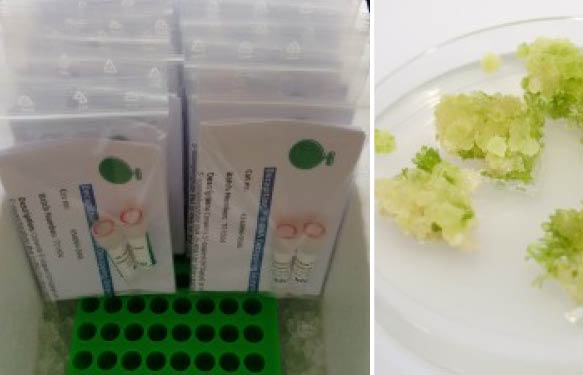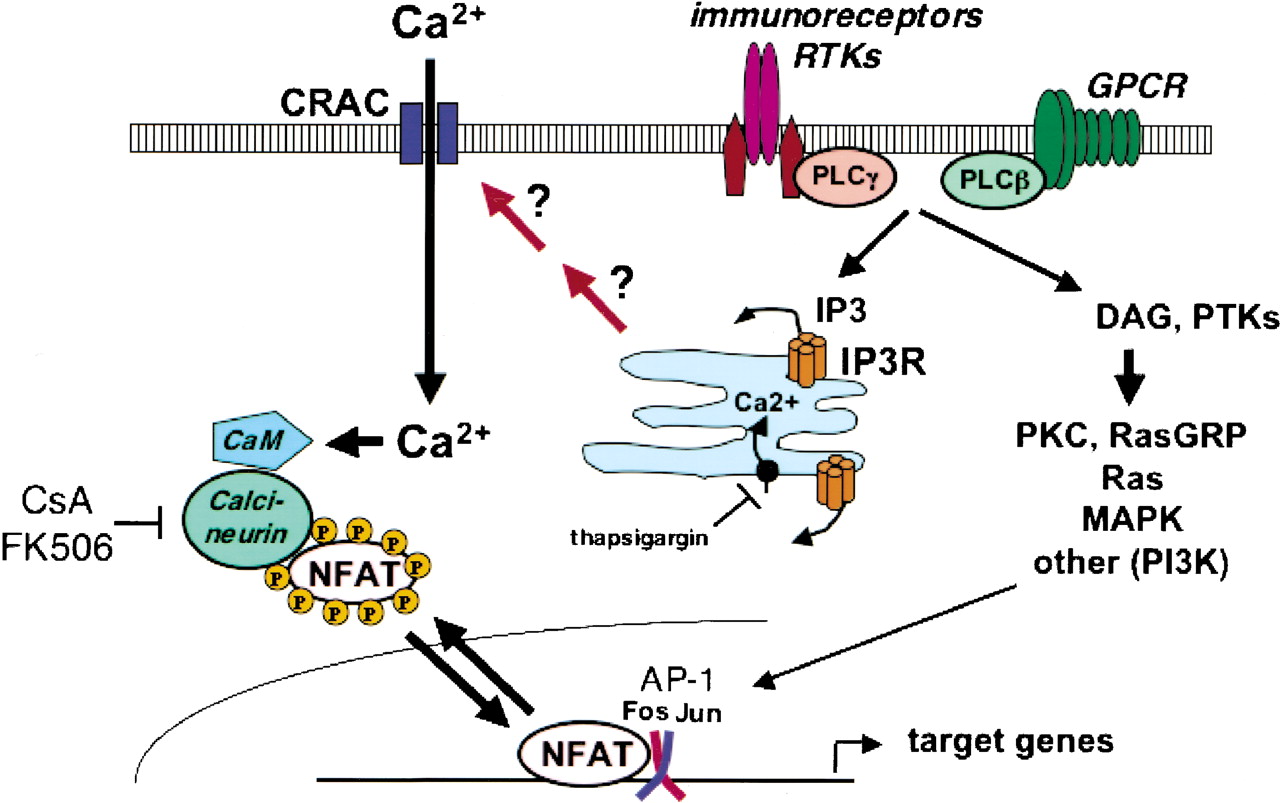As detailed in our previous post, the discontinuation of the enzyme tobacco acid pyrophosphatase (TAP), has left many molecular biology researchers without a suitable enzyme for their protocols. Perhaps the most classic assay using this enzyme was 5′ RACE, which required TAP to remove the 5′ mRNA cap yielding a 5′-monophosphate RNA. This then allows ligation of an oligonucleotide to the 5′ end using RNA ligase, thus permitting determination of transcriptional start sites and the true 5′ end of an mRNA. More advanced protocols have combined this with next generation sequencing to allow genome-wide analyses of mRNA transcriptional start sites. The Database of Transcriptional Start Sites (dbTSS), for example, is populated by TAP-based transcriptional start sites. TAP is also used in protocols like GRO-Seq that involve an End Repair step combining Tobacco acid pyrophosphatase and RNA Ligase.
Figure 1. Overview of 5’RACE protocol using tobacco acid pyrophosphatase. Non-capped mRNAs are first converted to nonligatable 5′-Hydroxyl RNA with APex™ Heat-Labile Alkaline
Phosphatase, prior to decapping and dephosphorylation of capped mRNAs to 5′ monophosphorylated RNA with tobacco acid pyrophosphatase and oligocapping with RNA ligase. (Source: Epicentre’s ExactSTART™ Eukaryotic mRNA 5′- & 3′-RACE Kit Manual)
Reason for the discontinuation (why can’t we produce it recombinantly?)

source: http://en.wikipedia.org/wiki/Callus_(cell_biology)
When Epicentre discontinued production of TAP, the first question we asked was whether one could just clone and produce the enzyme using tebu-bio’s protein production platform. It seems, however, the TAP enzyme was a classic biochemical preparation from Nicotina tabacum. The protocol to produce the enzyme requires growth of a substantial amount of tobacco callus tissue to isolate/purify tobacco acid pyrophosphatase, followed by a series of quality control steps. Now that the tobacco genome has been sequenced, it would be interesting to see if one could find the cDNA sequence of the TAP gene. But how do you determine the coding sequence of a protein with unknown amino acid sequence? Presumably one could perform Edman degradation on one of the remaining vials of TAP to determine the first 30 amino acids and work back from there.
Replacement technologies
In addition to TAP-based mRNA decapping protocols, other technologies exist that achieve more or less the same result of ligating an oligonucleotide to the 5′ end of mRNAs. Indeed the FANTOM project makes use of cap analysis gene expression (CAGE) using the Cap-Trapper technology that chemically adds a biotin to the 5′ end of mRNAs allowing sequencing of short, 27 nucleotide long, “tags”. This technology seems effective for rapid mapping of transcriptional start sites (TSSs), but seems to have a known bias thought to falsely include the TSSs of pseudogenes. Similarly the SMART™ technology fails to distinguish between capped and uncapped RNAs and is based on the terminal transferase activity of reverse transcriptase that tends to add three additional dCTPs to the 5′ end and also makes use of of a template switching strategy. The main appeal of the oligo-capping protocols over SMART™ technology is that they allow for a precise analysis of the transcriptional start sites of mature, capped mRNAs rather than a sequencing of all 5′ RNA ends including pseudogenes, rRNAs, and tRNAs which are dephosphorylated using APex™ Heat-Labile Alkaline Phosphatase.
Potential replacement enzymes for TAP
Again, as mentioned in our previous post, certain members of the Nudix family of proteins should be able to effectively decap mRNAs and are commercially available as recombinant proteins sold as western blot control and with no promised activity:

1) DCP2
2) NUDT16
3) NUDT12
4) NUDT15
According to a paper from Mike Kiledjian, each of these enzymes has strong decapping activity. One important point here is that TAP really had two activities: the first to remove the m7GTP cap and a second to dephosphorylate triphosphorylated and diphosphorylated RNAs (pppRNA and ppRNA) to yield monophosphorylated RNA (pRNA).
Data from experts
Among the experts consulted, each had their ideas of which recombinant protein might be best to replace TAP. The ideal enzyme of course would need to convert 5′-capped (m7GpppG or m2,2,7GpppG RNA) and 5’triphosphate RNA (pppRNA) to 5′-monophosphate RNA (pRNA). Importantly, however, this enzyme with decapping pyrophosphohydrolase activity should not have any exonuclease activity or be contaminated with exonucleases. Once decapped, mRNAs carrying a 5′ triphosphate alone would be subject to unwanted 5′-to-3′ exonuclease activity, thus altering the perceived transcriptional start site in 5’RACE experiments.

Figure 2. Recombinant proteins effectively decap m7GpppRNA. Shown are RNA ladder (lane 1), 26nt capped mRNA (lanes 2 and 6), mRNA decapped with a recombinant protein alone (lanes 3 and 4) or in combination with Terminator™ 5′-Phosphate Dependent Exonuclease (lane 5). (Data kindly provided by Weifeng Gu, UC Riverside).
To test candidate enzymes for exonuclease activity, the assay performed uses the 5′ monophosphate-dependent exonuclease Xrn2 as a positive control. Xrn2 was able to reduce the abundance of hot pRNA but not pppRNA or capped RNA, while our proprietary enzyme Decapping Pyrophosphohydrolase failed to do so demonstrating there is no detectable exonuclease activity (Figure 3B). This enzyme demonstrated strong decapping activity and 1 unit is able to convert 200ng of mammalian total RNA (m7GpppG, m2,2,7GpppG, or pppRNA) to 5′-monophosphate RNA (pRNA) in 30 minutes at 37°C (Figure 3A).
Figure 3. Decapping Pyrophosphohydrolase removes the cap from mRNAs with no detectable exonuclease activity A) Decapping assay: 32P-labeled RNA (denoted with asterisk) within the background of total cellular RNA at amounts listed at the top of the panel. B) Exonuclease assay: 32P-uniformly labeled RNAs with the indicated 5’ ends confirms that there is no detectable exonuclease activity. Xrn2, which is a weak 5’-3’exonuclease on monophosphate RNA, was used as a positive control (Data kindly provided by Xinfu Jiao and Mike Kiledjian, Rutgers University).
When will Decapping Pyrophosphohydrolase mRNA decapping enzyme be released as a product?:
The Decapping Pyrophosphohydrolase Enzyme is packaged and ready to be sold, but not yet fully released as a product. We are currently in the final stages of beta-testing to be certain that our customers will find this enzyme equal to or superior to TAP. Expert end-users are testing the enzyme for use in transcriptome-wide transcriptional start site mapping protocols, and these next generation sequencing based protocols take at least 2 months to complete. Once we have confirmation that Decapping Pyrophosphohydrolase performs at least as well as TAP, the product will be released.
Full product launch is scheduled for early June, 2015, however researchers wishing to purchase the enzyme prior to complete use validation should contact me for a quote. Researchers in the U.S. are encouraged to purchase on the tebu-bio website using a credit card:
http://www.tebu-bio.com/Product/003436004-35UL/Decapping_Pyrophosphohydrolase.html
Legal notes: SMART™ is a trademark of Clontech. APex™ and ExactSTART™ are trademarks of Epicentre (an Illumina company).







One Response
Here’s the most recent update. It seems there are two nice TAP replacements now:
http://5.196.212.231/2015/09/03/two-new-enzymes-available-to-replace-tap/